victorian / planning / environmental / law / association / volume






victorian / planning / environmental / law / association / volume






Cover: Kathy Mitchell presenting Tahnae McCormack, South Gippsland Shire Council with the Kathy Mitchel Award 2025
Do you ever feel you are in a fast-paced movie telling a familiar story?
Well, here we are again. Well into the throws of a new year and already 25 years into the 21st Century. It seems like only yesterday that the world was fretting in expectation of the Y2K bug compromising the ‘tech’ that the world was increasingly reliant on. While I was embarking on motherhood, Holly was enjoying her last year of kindergarten. Therein a quaint reminder of the breadth of VPELA’s membership.
Twenty-five years on, the world is even more reliant on ‘tech’ and life now moves at an even faster pace. Keeping up with the pace of modern life has become even more challenging in the workplace flexibility age – more flexible it might be, but how many of us feel that these days we work intermittently over 18 hours a day and into what used to be recovery time on weekends? Is there a sense now that there is little distinction between aspects of life which were once quarantined from others?
And while we are talking about pace, in recent weeks the Victorian Government has been working frenetically to deliver more of the aspirations set out in its Housing Statement of 2023. While committed to increasing housing supply and choice, there is still little tangible evidence that the new housing numbers it set for itself almost 18 months ago are anywhere near achievable. There’s been a strong sense that the government is all over the rhetoric with its regular, punchy ‘can do’ press releases, but that it is not matched with actions that will have real impact.
So, after nearly 18 months, the wheel-turning in progress at the Department of Transport and Planning has resulted in a steady rollout of ‘housing crisis remedy’ announcements and, more recently, amendments to planning schemes which are promoted as making the delivery of more housing easier and speedier.
For the senior and skeptics among us, we’ve seen it all before. Old ideas are rebranded in different packaging and the regulation that Bernard McNamara reminds us of in his article, that ‘has no natural predator’, rolls on. The day and night frequency of Teams messaging in our office, especially by and between its youngsters, has struggled to keep pace with amendments to planning schemes and the everexpanding Victorian Planning Provisions. The excitement building about the contraction of third party involvement was quickly suppressed when it was revealed there would be opportunity for local councils to restore at least some of it. However, it is important that we remain positive about this era of change and that ‘the movie’ which still has a long way to run, has all industry participants acting together for a happy ending.
The industry has responded cautiously saying that any changes to planning schemes (and planned amendments to legislation in due course) that can make planning approvals easier, quicker and less expensive, are welcomed but it speaks loudly about the still high cost of materials and labour and the commerciality (or not) of urban development in Victoria. The ‘blast’ of housing initiatives, as Bernard describes them, does nothing to remedy these impediments to the timely delivery of more housing.
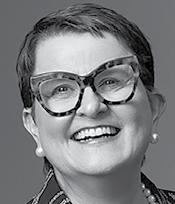

While Bernard McNamara, Rory Costelloe and Colleen Peterson’s articles keep the issue of housing delivery and its challenges clearly in focus, there is much more to entertain and inform in this Autumn edition. Your President’s column is ever optimistic and speaks to the new Board’s agenda for this year and the events it plans for members.
Phil Martin, who many will know from his time as a VCAT member, reminds us of the value of taking time away from work but, also, how your work life can influence your holiday choices. There are articles about revitalizing Geelong and about the factors influencing the quality of playspace in greenfield development. We’ve got a humorous recount of the Christmas 24 Drinks from our still anonymous correspondent, and contributions from the YPG.
A good part of this edition also reminds us of the distinguished professional (and personal) contribution made by Kathy Mitchell, a VPELA Life Fellow, on the occasion of her retirement from Planning Panels Victoria.
Finally, Sean Stephens has provided an insight to another distinguished professional and Fellow, John Henshall, who died late last year. The planning economics world, in particular, is all the poorer for his passing.
We hope you enjoy reading this Autumn edition of Revue, including inputs from our regular contributors like Rory Costelloe, Hew Gerard for ‘In case you missed it’ and other members across the industry spectrum keen to make their contributions to the Association. Contributions are always welcomed and appreciated… and suggestions always considered.
Amanda & Holly
Amanda Ring and Holly McFall are part of the team at UPco
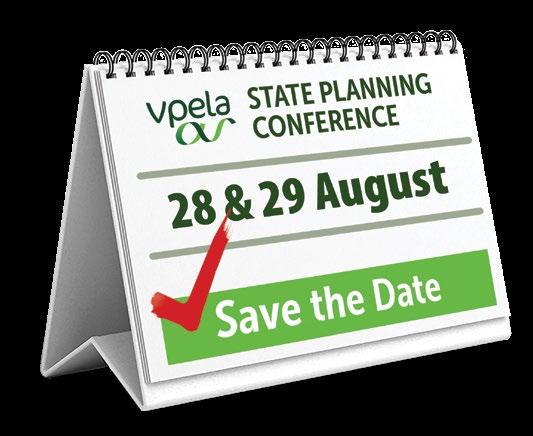
Happy New VPELA Year and welcome to Revue for 2025.
This year promises to be a landmark for planning as the State government implements a number of significant reform initiatives. While planning can only do so much to reinvigorate the housing industry, it can certainly augment improvements in economic conditions. By the time you read this we will be enjoying our first rate cut since November 2020 – will this combine with the planning reforms to substantiate emerging ‘green shoots’ in housing delivery? We will continue to engage with the Minister for Planning and the Department of Transport and Planning to offer a broad industry perspective on measures to improve the planning system.
As always, VPELA has a busy program in store for this year, laden with opportunities to learn about and discuss new initiatives, issues and trends, along with our signature social events.
It was great to see so many of you at our first event for the year –the Summer Soiree, generously hosted by Norton Rose Fulbright at its superb indoor-outdoor event space. We celebrated the launch of our first Reconciliation Action Plan (RAP) and announced this year’s winner of the Kathy Mitchell Award.
At the heart of VPELA’s purpose is a goal to advance professional knowledge and understanding in all aspects of planning and environmental policy, law and practice. Recognising, understanding and respecting First Nations cultures is an intrinsic part of good planning and environmental practice, and promoting cultural understanding has an important role to play in the journey towards reconciliation.
Integral to this culture is the way Aboriginal and Torres Strait Islanders have been caring for Country sustainably for tens of thousands of years, and their deep well of knowledge in environmental planning. This is why we have developed a RAP and a program of initiatives to promote awareness of First Nations cultures, practices, knowledge and issues. These include events, seminars and articles ranging from broad cultural awareness themes to specific technical topics.
Huge thanks to Mia Zar, Sarah Carlisle and Chloe Moorcroft for their tireless enthusiasm and hard work in bringing our inaugural Reconciliation Action Plan to fruition.
Congratulations to Tahnae McCormack, winner of the 2025 Kathy Mitchell Award. Her dedication to excellence and progressive mindset make her a deserved winner, and I’ve no doubt she’ll be a wonderful ambassador for VPELA and the broader industry.
We conducted the second in our regional seminar series on ‘Presenting a compelling case at VCAT/ panels as a local government planner’, in Bendigo to strong support. Last year’s instalment of this event in Cowes was very well received too and continues to be very popular with our regional members.
Looking ahead, keep your eye out for seminars on the soon-to-bereleased Plan for Victoria, changes to ResCode and new controls for the Suburban Rail Loop station precincts, along with our traditional Planning Minister’s address and Red Dot seminar. While we have a long list of other seminar topics we’d like to squeeze in this year,

please let us know if you have ideas for topics that you think would be of interest to our members.
If you missed it, Dani Davidovits was appointed as co-convenor of our Young Professionals’ Group at the end of last year, joining Charlie Wurm in that role. Congratulations to Dani, and much appreciation to predecessor Izzy Vescovi who performed the role with distinction and contributed much to the success of the group.
You will have received an invitation to contribute to our biannual member survey in the last few weeks. This survey provides an important ‘litmus test’ of whether we’re meeting members’ needs and expectations. We’ll publish a summary of the results once they have been compiled.
Make sure you’ve marked the dates for our annual Gala Dinner and conference in your calendars – 2 May and 28-29 August respectively. We’re excited to be changing things up with a new venue for the dinner this year, and the conference committee has already begun planning another engaging program for the conference.
Watch this space, too, for an upcoming announcement about this year’s study tour.
Have a wonderful 2025!
Mark Sheppard is President of VPELA and a Director at Urbis.

Colleen Peterson, Head of State Planning, Department of Transport and Planning
Since joining the Department of Transport and Planning (DTP) in October 2024 as Head of State Planning, I have relished the opportunity to add my skills and expertise to the planning reform agenda, bringing a new lens to how to best maximise the momentum of discourse around affordability, housing supply and other key government initiatives.
Being able to add my experience to the incredible work being undertaken by DTP has given me a fresh appreciation of the technical skills required to translate big ideas into the statutory system.
There has been significant work associated with the codification of ResCode, following consultation with targeted stakeholders throughout 2024. The breadth and depth of input from local government, stakeholders and industry through targeted consultation by the department is to be commended and has been invaluable to the process.
Changes to clauses 55 and 57 of the Victorian Planning Provisions (VPP) will put in place deemed to comply rules for townhouses and small-scale apartment buildings of three storeys or fewer and residential buildings and will apply to all planning schemes in Victoria and be known as the ‘Townhouse and Low-Rise Code’ (the Code) and the ‘4 Storey Apartment Standards’.
With 1.45 million lots located in the Neighbourhood Residential Zone, General Residential Zone and Residential Growth Zone in metropolitan Melbourne, it is anticipated that this reform has the potential to add significant housing supply. Importantly, this reform will enable the planning system to deliver more housing in locations people want to live, and in a form that in the current market, industry is better placed to deliver.
This reform represents change to how residential development will be assessed in Victoria. This approach will reduce council planner workloads, tackle application backlogs and free up council resources to focus on complex projects and other significant planning matters.
By the time this edition of Revue is published, the Minister for Planning will have announced details of the reforms, with an implementation date of 31 March. The staggering of the implementation date from the announcement will, in the intervening period, enable education and dialogue with stakeholders, in particular local government, on the operation of the new provisions.
I hope to see VPELA members present at the various forums during March and April to promote an understanding of the provisions, how they are designed to operate and how to use them.
Activity Centres are great locations for more housing, but they are so much more. They are places to work, interact and places where many Victorians access their essential daily needs. The Activity Centres Program will seek to enliven these places and make sure they live up to their potential.
This approach has, initially, been piloted in 10 centres, with changes to planning controls for these centres recently announced and gazetted into the planning scheme. DTP will be engaging with stakeholders to promote an understanding of the provisions, and I encourage VPELA members to take advantage and attend these sessions when announced.
These centres are located near train and tram stations and will support new homes in areas with existing transport capacity and will leverage new capacity created through the Melbourne Metro Tunnel project, Victoria’s Big Build investment and the Level Crossing Removal Program.
These centres are intentionally not uniform and, as such, not all centres will experience the same level of growth. The vision is for taller buildings clustered around activity cores, creating dynamic hubs. Beyond the core, buildings will scale down, blending with existing neighbourhoods, including mid to low-rise apartment buildings and townhouses, alongside existing homes.
This program shows our commitment to future-proofing these activity centres, ensuring that when market forces are ready for significant investment in apartment living the planning controls will enable these centres to make an appropriate contribution to housing and liveability.
With the release of the Economic Growth Statement in December 2024, a commitment has been given to speed up Environmental Effects Statement (EES) processes, targeting assessment review of no longer than 18 months. This announcement recognises both the important role of the EES process as well as the need for timely decision making.
Once the implementation plan is finalised in the coming months, I will be eager to discuss these reforms with key stakeholders and industry representatives, and how these reforms will ensure that assessments are robust, efficient, transparent and timely. Again, I ask members to engage with this process when it commences.
Colleen Peterson is Head of State Planning with the Department of Transport and Planning

Tim Biles, with the assistance of Sue Wood and Catherine Heggen, prepared an eloquent tribute sent to members soon after John’s passing on 25 October last year. We considered the Autumn edition of Revue would be incomplete without another reflection and Sean was quick to accept our invitation noting he worked with John for many years and up to John’s retirement from Ethos Urban and full-time professional practice in 2021. Eds
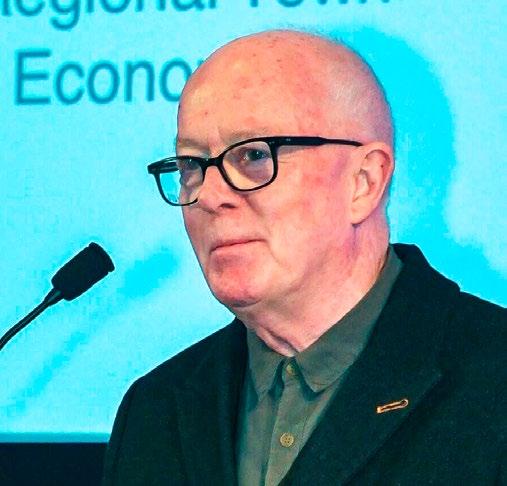
On the 25 October 2024 we lost our dear friend and colleague John Henshall.
A Fellow of VPELA and Life Fellow of PIA, John made a tremendous contribution to the planning and development industry over many decades as a leading light in urban and regional economics.
Born and bred in Wangaratta, in 1968 John graduated from the University of Melbourne with a Bachelor of Commerce (Economics) degree.
He soon developed a reputation for delivering economic advice to town planners and other allied disciplines to shape the growth and development of cities and regions. John always emphasised the practical over the theoretical, and clear language over jargon. Every project was a story to be told with Economics as the narrator.
John also became involved in urban planning in Asia for clients such as the World Bank and United Nations. John had a wealth of stories from this time including making friends with the Balinese royal family, avoiding a traffic fine by convincing a Jakarta policeman he was a New Zealand diplomat, and applying what he thought was lip balm one morning in Beijing only to realise late that day (after numerous meetings) it was actually lipstick!
In the early 1980s John started his own practice which evolved into one of the first and largest multi-disciplinary practices in Victoria (Henshall Hansen and Associates). Subsequently, in 1997 John returned to an economics-only practice and founded Essential Economics.
Essential Economics had a reputation for high-quality advice and equally high quality parties. Numerous “Blues Nights” and “Curry Nights” and other events were held that reflected his view about the importance of strong relationships with industry peers.
It was at “EE” in 2003 that I first worked with John. This was a professional connection which lasted until John retired from Ethos Urban in 2021.
An excellent mentor and a hard – but always fair – taskmaster, John taught that it was personal, not virtual, relationships that mattered. Showing up at events, meeting people for coffee and creating genuine connections with new, emerging and established professionals across the industry was both good fun and good business.
John was one of those people who was always up to something interesting both inside and outside his professional life. The connection to Clarksdale, Mississippi, where John wrote free of charge an economic revitalisation strategy which subsequently turned into a book, is well known. But this is just scratching the surface of a life well lived with a mix of adventure and fellowship that had a positive impact on many lives.
On behalf of a grateful industry, thank you, John.
On behalf of your many friends and colleagues, John, we will miss you.
Stephens is Group Director, Economics at Ethos Urban – Melbourne








Valentine is a founding Director of onemilegrid, a consultancy specialising in traffic engineering, transport planning, and waste management. With a sufficient cover of grey hair to justify his 20 plus years of industry experience, he has worked across a broad range of projects, providing strategic advice to both public and private sector clients. His expertise spans urban developments, major infrastructure projects, and integrated transport solutions, ensuring that movement and accessibility are key considerations in planning and development.
Elected in 2024, Valentine is the newest member of the VPELA Board. A long-time supporter of the Association, he has been an active member and participant since 2007 and is excited to contribute in this new capacity.
At onemilegrid, Valentine remains very much ‘hands on’, enjoying the problem solving aspects of his profession. He is a trusted expert witness, regularly appearing before VCAT and the Supreme Court, where his technical knowledge and practical approach have earned him a strong reputation in this field.
Beyond his technical expertise, Valentine has always been passionate about engagement and knowledge sharing. He has contributed to VPELA conferences and seminars, bringing a practical and collaborative perspective to discussions on urban development and transport planning. He enjoys mentoring younger professionals and believes in fostering an open and innovative approach to solving complex transport and planning challenges.


Outside work, Valentine is a beloved girl dad to two little cherubs, often found being run ragged when not at OMG HQ. In the summer, he somehow finds time to follow his passion for cricket, representing Baden Powell Cricket Club on the Mornington Peninsula. He primarily throws down medium-to-slow seamers that tend to bore the batter out rather than overwhelm them; not the prettiest, but effective.
Beyond the cricket pitch, he and his wife, Laura, have just embarked on a holiday home renovation in Rye, which will no doubt include a number of negotiations around access, sunlight, wardrobe sizes, and equitable development (between themselves not others). Fortunately, no negotiations will be required on the size of the garage, as there is already one on-site!
As a Board member, Valentine is keen to help strengthen VPELA’s commitment to sustainability, innovation, and knowledge sharing. He sees VPELA as a critical platform for discussion, learning, and professional development, where planners, legal experts, engineers and other professionals can collaborate to shape the future of cities and communities. He is very keen to work with fellow members to drive meaningful discussions, share insights, and support the next generation of professionals.
Valentine Gnanakone is a Director at onemilegrid







VPELA’s Young Professionals Group (YPG) is gearing up for a busy 2025; continuing its mission to educate, inspire and facilitate connections between its members. It is the YPG’s primary mission to provide VPELA’s young (whether of age or at heart) members with opportunities to engage with the industry and to develop relationships and networks in the infancy of bright careers.
In 2025, the YPG has welcomed a number of new members to the Committee – Campbell Gullock, Lizzy Henry, Steven Huang, Lauren Millington, Lewis Moore and Maya Rychner. The diversity of experience and mindset each new member will afford the Committee is exciting, and we are already grateful for their zeal and contributions so far. Of course, this year’s Committee has been enriched by the contributions of its outgoing members, each of whom have left their own mark. As
such, we once again thank Isobell Vescovi, James Cossins, Madeleine Craig, Briony Oddey, Adam Gardiner and Romy Fanarof for their contributions.
As always, the Committee will facilitate its regular program of seminars and social events. It kicked off with the annual Speed Networking event in February and will be followed by other stalwart events like the Masterclass Series, YPG Trivia and a number of other events which are already in motion.
Anyone who wants to know more about the YPG can reach out to us or other Committee members at any time. It would be our pleasure to help in any way we can and we look forward to seeing as many of you as possible as the year progresses.
There’s been some changing of the guard at YPG. Dani Davidovits will co-convene with Charlie Wurm and six new members join the ranks. There’ll be plenty of opportunities to meet them throughout the year and join them at the many YPG events the committee has planned. For now, though, get to know a little about them and their after hours interests. Eds.

Charlie Wurm (Co-Convenor)
Charlie is a Senior Associate in the Planning & Environment team at Maddocks. He works on a broad range of planning and environmental matters, and regularly appears as a solicitoradvocate before VCAT, Planning Panels and the Magistrates’ Court of Victoria. Charlie also maintains a broad practice in planning prosecution and enforcement matters. Outside work, you will find Charlie exploring Melbourne on his bike, slow cooking something at home or quite literally begging for a Blues premiership. This is Charlie’s third year as YPG Co-Convenor.

Dani Davidovits (Co-Convenor)
Dani is an Associate in the Environment & Planning team at MinterEllison. Dani regularly assists clients with a range of environmental regulatory matters spanning across the retail, mining, renewable energy, waste, and public sectors. Dani enjoys the dynamic nature of environment and planning law, assisting clients to navigate a changing legal landscape, and the continuous learning that comes with working in an industry that always keeps you on your toes. Outside work, Dani is a lover of musical theatre, stand-up comedy, and discovering new recipes. Most mornings you will find her at a hot mat pilates class. This is Dani’s first year as YPG Co-Convenor.

James Aloi
James is a Senior Traffic Engineer at WGA and 3rd year YPG Committee member. James works on a wide variety of traffic engineering and transport projects including town planning applications, strategic transport planning, traffic management
design, road safety auditing and traffic modelling. James is passionate about building client relationships, providing excellent service and preparing high quality work. This year James is looking forward to more successful VPELA events and not looking forward to another pitiful year of Minnesota basketball and St Kilda football.

Bridget is a Town Planner at SMEC. Bridget has experience on a wide range of planning and environmental projects and has a particular interest in Victoria’s growth areas. Outside the office, Bridget enjoys trying new restaurants with family and friends and frequent trips to the beach.
This is Bridget’s third year on the YPG Committee.

Caroline Graham
Caroline is an Associate Town Planner at Tract. She is involved in a range of statutory and strategic planning matters and has a particular interest in precinct planning for urban renewal sites. Her projects span Victoria and Tasmania, and include residential, commercial, industrial and tourism uses, and a lot in between. Outside the office, Caroline can be found on her bike, walking with her dog or cooking up a storm.
This is Caroline’s third year on the YPG.

Felicity is a town planner at Contour Consultants. Felicity has worked on a variety of planning matters, including residential, mixed use, industrial, retail and commercial developments of all scales. She is results driven and passionate about delivering positive and innovative planning
outcomes. This is Felicity’s third year on the YPG committee, and she is looking forward to what the year will bring! Outside work, Felicity is a passionate Carlton supporter, enjoys travelling, cooking delicious food and spending time with family and friends.

Tom Morrison
Tom is a lawyer at Planning & Property Partners and works in all areas of planning and environment law. He has experience acting for developers and landowners in planning applications, VCAT appeals and Planning Panels Victoria. Away from the office, Tom is an active surf lifesaver and keen outdoorsman who enjoys being constantly on the move. This is Tom’s third year on the YPG Committee.

Joshua McLennan
Josh is a Senior Consultant in HIP V. HYPE’s Better Cities and Regions Team. His work focuses on delivering better strategic outcomes which reflect a neighbourhood’s unique social character, governance structures, and local environmental & climatic conditions. He is particularly interested in regional towns and has managed projects throughout Victoria, up Australia’s Eastern Seaboard and into South Australia. Josh has recently moved to Jan Juc and enjoys getting to the beach with his dog Leo, riding bikes and having a cold one off the wood at the Beach Hotel.

Dinan McMahon
Dinan is a Planner at Cogency Australia, a climate focussed planning consultancy firm. He has a major focus on the GIS side of planning, producing maps for a range of urban and regional projects. Dinan enjoys work in the renewable energy space and is lucky to work on a variety of solar, wind and energy storage projects across Australia. He is passionate about the role planners have in reducing emissions and transitioning our economy to carbon neutrality. Outside work, Dinan enjoys the outdoors, playing and watching sports, and discussing public and active transport. This is Dinan’s third year on the YPG Committee.

Chloe Moorcroft
Chloe is a Manager in the national Project and Program Delivery team at KPMG. Having spent the majority of her career to date working in statutory planning across both Local Government and private sector, Chloe’s recent shift to KPMG has been driven by her desire to explore strategic planning and project management. Outside work, Chloe is a doting dog mum, avid reader, boardgame lover and forever hopeful Ferrari F1 fan. This is Chloe’s second year on the YPG Committee.

Campbell Gullock
Campbell is an urban designer at GUD (Gullock Urban Design). A problem solver and solutions oriented thinker, he brings a creative yet pragmatic approach to urban design. Working across projects of all scales and typologies, he frequently advises on planning applications and appears before VCAT in an expert witness capacity. Outside work, you’ll find him down at the beach and dabbling in construction.

Lizzy is a Project Traffic Engineer at onemilegrid. She enjoys working on the traffic engineering and waste management aspects for a variety of projects of different scales and uses from small townhouse development to subdivisions, hospitals, and major multi-storey mixed-use developments. Outside work, you’ll find Lizzy diving into her latest hobby (currently golf, wish her luck), spending time with her friends and listening to audiobooks. This is Lizzy’s first year on the YPG Committee.

Steven is a Senior Statutory Planner at Maroondah City Council, where he also plays a key role in community consultation for strategic planning amendments. Driven by a passion for efficiency and transparency, he works to refine and streamline planning processes in the public sector. Steven stays current with the latest planning legislation and emerging trends, ensuring best-practice approaches in his work. Outside of the office, you’ll find him exploring coastlines and diving beneath the waves to discover the unique and fascinating marine life.

Lauren is a lawyer in the Government, Planning and Environment team at Russell Kennedy. She works on a wide range of planning, environment and building appeals, advices, and prosecutions, for both local government and private clients. Out of the office, Lauren enjoys dog-spotting, hunting down Melbourne’s best hot chocolate, and keeping her indoor plants alive. This is her first year on the YPG.

Lewis Moore
Lewis is an Associate: Planning & Urban Design at Ratio Consultants and has worked across both private and public sectors. Lewis enjoys working on a range of projects at the nexus between planning and urban design, often assisting with preparing expert evidence for presentation at VCAT and Planning Panels, involving interaction and negotiation with multiple stakeholders and disciplines. He particularly enjoys the latter aspect due to his collaborative and curious nature. The objective of Lewis’ work is to facilitate projects that reinforce a strong sense of place and create a high degree of social and natural cohesion. In his spare time, you’ll find him at the gym, playing tennis or guitar with friends, cooking or enjoying watching the Hawks take strides toward their next three-peat.

Maya Rychner
Maya is a graduate environmental planner at Biosis and has experience in securing environmental approvals at the local, state and commonwealth level. She particularly enjoys working in the emerging space of ‘nature positive’ and is passionate about integrating biodiversity principles into Melbourne’s urban growth planning. Outside the office, Maya enjoys spinning around in a circus hoop, hitting the slopes in winter, and anything creative. This is Maya’s first year on the YPG Committee.

Welcome everyone to celebrate the remarkable and dedicated career, so far, of Kathy.
Now, I pointedly say ‘so far’ because there is no doubt in my mind that there is plenty more to come. Indeed, so fearful were we of using the “R” for retirement word, that we issued the invitation to this event as “completing her role at PPV and embarking upon a new chapter”. So here we find ourselves tonight with Kathy definitely not retiring and definitely not the retiring type.
And really, who could honestly imagine this woman retiring? For 28 years at Planning Panels Victoria (PPV), including 20 as Chief Panel Member, Kathy has brought energy and drive and passion to her work, quite possibly on Every. Single. Day. Along the way she has been a leader to hundreds of Panel members and has heard submissions and evidence from thousands of barristers, solicitors, advocates, experts and community members. She has conducted herself in a way that demonstrates her fundamental belief in broad inclusion and participation.
In conducting hearings that had particularly strong community interest and let’s face it, she has heard the vast majority of the most controversial, the longest and the most complicated matters at PPV for at least two decades, Kathy has always ensured that at least part of the hearing is held in the local area of the proposal. This has been the case regardless of whether that meant a few nights staying in a dodgy hotel in Shepparton, or a week or two conducting a hearing above a pokies venue in outer suburban Melbourne in an era when smoking was still permitted inside such venues and, by 11am each morning, her crisp twin set or suit of the day would be overtaken by the waft of cigarette smoke seeping up through the concrete floor.
During Covid, Kathy stridently lead PPV into a new era of online hearings, adamant from the outset that strategic planning in this State could not be allowed to grind to a halt if the economy was to survive the pandemic. And following the pandemic, Kathy has ensured that the gains made in the use of, and investment in, technology, hybrid hearings and electronic materials have very much become the new normal under her leadership.
Throughout her career, so far, Kathy has set ambitious and consistently high standards for herself and those around her. I first met Kathy in 1991. She was a tutor at Victoria University where I was studying planning and the students had to prepare and deliver a presentation about District Centres (yes, that’s what they were called back then) and something called a multi-function polis which was apparently all the rage at the time in her home state of South Australia.
Even at that early stage in her own career, it was clear that Kathy was a woman of high standards, expectations and principles. In Kathy’s ‘tutes’ at VUT, no one dared not turn up and absolutely no one dared present for more than their allocated time.
Which brings me to the topic of timetabling. One of the reasons Nick and I were so thrilled to be asked to speak tonight is that we knew Kathy would most likely (but not definitely) not be watching the clock waiting for an opportunity to jump in and tell us that these submissions were not of assistance to her, that we’d said we’d only be

20 minutes, that it seemed like we still had a lot of submissions to go before we were finished, and that there were other parties waiting to make submissions, or others have already made these submissions, and we should think seriously and carefully about moving on.
As we all know, in Kathy’s hearings, there is no universe where there could be any rational justification for a failure to comply with Kathy’s timetabling requirements.
Kathy’s role in VPELA was also executed to the highest standards and always with passion and a curious mind. As President for 8 years until 2010 and a Board member for many before that, Kathy followed in the footsteps of former VPELA Presidents Peter Barber, Ian Lonie, Henry Turnbull and Jane Nathan in growing the VPELA membership and ensuring that the organisation maintained its multi-disciplinary focus and remained a-political in its approach to providing a forum for discussion and debate about the relevant planning, legal and environmental topics of the day.
Kathy has also persistently been inclined to give junior practitioners a tap on the shoulder to encourage and sponsor us to move into the next chapter of our professional and personal lives and has taken great pride in watching her vision for those around her come to fruition. Many of us in the room have been the beneficiary of such a tap and many can thank Kathy for their first break, an opportunity or regular words of encouragement.
I want to acknowledge Kathy’s children who are here tonight –Michael, Rebecca and Stephanie. It will be evident to you, as it will have been in the past on the various occasions of the awarding of an Order of Australia for services to planning, or VPELA’s Richard J Evans Award, or the recent creation by VPELA of the Kathy Mitchell Award to recognise young professionals in the public service, that your mum is a pretty extraordinary and amazing woman. Your mum is much loved by all of us; playing the role over the years as second mum, wise aunt, cranky old aunt and, of course, time keeping aunt. I want to thank you for lending her to us, particularly at those times when the profession probably demanded much more of her than could ever have reasonably been asked.
This evening is not about a retirement – it is about a celebration of the qualities that Kathy has consistently brought to all aspects of her life and the writing of a new chapter. It’s an honour to have the opportunity to bear witness to this transition into your next chapter, Kathy, as you have done for so many of us here in the room. I have no doubt your future quests, like those of your time at VPELA and PPV, will be filled with drive, passion, ambition, a curious mind, the not infrequent pursed lips and, of course, very precise timetabling.
colleague’s tribute
It is somewhat daunting to speak at an occasion such as this for a person who has been such a commanding figure in planning in Victoria. The temptation is to retreat into the numbers such as the number of Panel reports, the days of hearing, the number of submissions heard. These are mighty numbers but to focus on them, in my mind, is to miss the bigger picture.
Kathy has been hugely influential in the development of planning in Victoria over her time as Chief Panel Member. Melbourne and Victoria today are very different to when Kathy moved here from South Australia in 1982 and, more particularly, very different from when she commenced as a sessional panel member in 1991.
I didn’t meet, or at least get to know, Kathy until I became a sessional member in 2003. In mid-2004, Kathy got the top job as Chief Panel Member and within a relatively short time was managing the fallout from two large projects being the Port Phillip Channel Deepening and the Nowingi Long Term Containment Facility – also known as the toxic waste dump.
One of her greatest strengths in the panel environment has been her strategic vision and an appreciation of politics. I don’t mean her being a political operator, rather, having a keen awareness of the political environment. This is borne out in that at Planning Panels Victoria Kathy has developed trust and worked effectively with ten Ministers for Planning from across the political spectrum.
Victoria has a proud history of third-party involvement in planning decision making at the state level including at Panels and VCAT. It is in the nature of the task that independent, evidence-based advice provided to government isn’t always welcome. It is in no small part due to Kathy’s leadership over the last 20 years that her advice has always been respected, and nearly always taken.
She was always committed to giving the best clear, fair, evidencebased, independent advice to government. When that is done, your job is done and the decision by government will play out in its own way and time.
There is extreme pressure when large projects are before you, and Kathy’s work ethic and discipline are second to none in driving delivery of the advice to government within tight timeframes.
Kathy’s record in chairing many major project inquiries including the North South Pipeline, the Victorian Desalination Project, the Metro Tunnel, the Western Port Gas Import Terminal, and countless other major matters is well known.
There are too many hearings and too many stories to dwell on the detail, but I do have to mention my personal favourite. When Kathy was chairing the VDP inquiry, a submitter slammed a frozen road-
On behalf of all of those who have appeared before you at PPV, and all of those at VPELA, and those here tonight, I want to thank you for your service and passionate commitment to your role at PPV and to give you a little return shove through the exit door at PPV so we can witness what other sensational achievements you are about to deliver in your career. Congratulations on a wonderful career…so far.
Tamara Brezzi is a Partner at Norton Rose Fulbright and VPELA Past President

Nick Wimbush, Planning Panels Victoria
killed bandicoot on the desk as evidence that despite what the experts said, there were indeed bandicoots in the area. Kathy did not bat an eyelid and invited the submitter to make their submission.
Passions often run high at panel hearings and at times there is security and Victoria Police involvement. In any difficult matter, Kathy pulled out the most powerful weapons in her armoury, not the offences against a panel under section 169 of the Planning and Environment Act but firmness, politeness, respect and empathy.
Kathy is a living legend when it comes to timetable management and I know there are many advocates and experts here this evening who have been asked to wrap it up or move on from an issue the panel is across in the interests of the bigger picture.
Through her leadership, Kathy, has turned Planning Panels Victoria into a well-oiled machine, with a reputation for delivering sound and timely advice to government and local government. Her staff have a well-deserved reputation for managing parties outside the hearing environment and supporting inexperienced and sometimes distressed submitters. She has always thrown herself into her work 100% but this doesn’t mean her work is her life, and her many long-term friends and wonderful family attest to that.
Kathy’s leadership, through the pandemic was also exemplary, and within a matter of weeks of the start of lockdown Panels Victoria converted to online hearings, allowing not only panels but the broad planning ‘industry’ and project approval processes to continue with significant economic benefits for Victoria and the community.
In this new world of alternative facts and alternate truths, clear evidence-based advice and decision-making is more important than ever. Kathy has been a great guardian of that approach at Panels for a long time and will be sorely missed, but her legacy will continue through the many people who have learnt from, and been inspired by, her. It is wonderful to see friends, colleagues and family here to pay tribute to you at the end of an era at Panels. I appreciate the support, loyalty and friendship you have shown me through good times and bad. I wish you all the very best in the next phase of your career. Thank you.
Nick Wimbush is a Senior Sessional Member with Planning Panels Victoria and a Member at VCAT
People often ask how one got into their career of choice and what the determining factors were. Growing up in Adelaide, I fell off the rails in Year 10 and then failed Year 12, mostly due to significant family trauma, and I honestly thought I was doomed. I worked in shops, department stores and the like for four years, then I went back to school to undertake Year 12 in an adult college. I was always going to be a school teacher, but I heard about a ‘newish’ course called town planning and with geography being my favourite subject, it seemed perfect for me. It was a fabulous few years, initially the course was very much design oriented and I failed one first year subject as my turning circles for a caravan park were not right. However, a new Head of Faculty in Year 2 of the course changed all of that – for the better.
After graduation, I was employed in a consulting firm in Adelaide (now known as Hames Sharley) and came to Melbourne after 18 months, ostensibly for a year to undertake a graduate diploma in urban sociology at Swinburne. I then stayed and worked with David Whitney at Perrett Lyon Matheson for a few years, getting married in the meantime. When I was pregnant with my first child, however, I had to leave the firm as there was no family support whatsoever.
After two more children, I variously worked part time as a panel member (well before Planning Panels Victoria was in place), an academic and a consultant. After my youngest turned three in mid1995, I decided it was time to have one job with a regular pay check. I became the coordinator of strategic planning at the (new) City of Boroondara (but I still kept doing sessional work). I left in May 1996 to commence as one of two Senior Panel Members (the other being the late Paul Jerome) in the newly formed Planning Panels Victoria (PPV), with Helen Gibson AM as the Chief Panel Member.
In 2004 I became the Chief Panel Member. I continued to grow PPV, with additional senior full time members, less sessional members, more administration and finance support through a finance team, introduction of senior sessional members, annual reporting, regular formal and informal stakeholder engagement, off site trips for the whole office, ongoing professional development, establishment of what we initially called Panel associates, now a team of project members, a Deputy Chief Panel Member, and an office manager. And Adrian Williams has been with me the whole of my journey.
One of my favourite things about being involved with PPV was the diversity and rigour of the work undertaken. Every case was an amazing learning experience and every case was different. I felt like my brain was imploding at times. The effort put into our work and delivering great outcomes, if warranted, without fear or favour, was extremely satisfying. I promoted a ‘can-do’ culture, to look for the good, rather than focussing on the not so good. I would always ask ‘can it happen, if so how’?
The only downside was when other forces were at work behind the scenes and reports were partially or completely ignored. I would always say, if the Department or others had something to say, or there was new information, it should be brought to the table in fairness to all involved. Thankfully this did not happen very often, but when it did, it was extremely disappointing.
PPV made significant changes through COVID, with the first on-line Hearing held six days after COVID officially hit. It was a steep learning
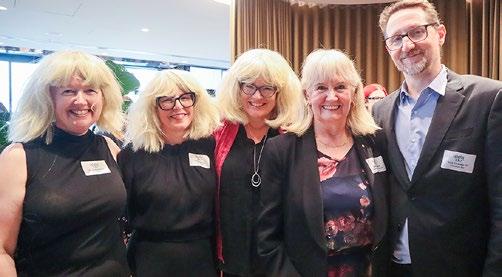
curve as most know technology was not really my forte. PPV conducted regular professional development forums online for ease of access for sessional members and retained the hybrid option for all Hearings, as well as most Directions Hearings. PPV undertook some massive hearings during that time, some of mine included the Surf Coast DAL, Crib Point EES, SRL EES, and round two of North Shepparton.
I can’t name my favourite cases, there have been so many. I could do a top 10, maybe another time. But certainly, back in the day when we could, regional trips with circuit dinners were absolute highlights. At all times, I enjoyed the challenge of preparing for cases, getting the team together, ensuring the robustness of the hearings, concluding every day on time and putting the report together within agreed timeframes.
Through this article, I give a huge shout out to the PPV team, past and present, and to those who have appeared before me. I have truly valued your contribution to the ethos, culture and robustness of PPV over the past 28 years.
I reiterate how important it is for those of us ‘senior’ in the profession to give back, particularly in mentoring and supporting up and coming professionals. I was fortunate to have been mentored by people like Helen Gibson, David Whitney and Rodger Eade, amongst others. Likewise, I have been fortunate to have the opportunity to work with amazing people early in their careers, including Tamara Brezzi, Jodi Kennedy, Sarah Raso, Jane Sharp, Briana Eastaugh, Jess Cutting/ Tulloch, Andrea Harwood, Jarryd Gray, Elissa Bell and Julia Thomson, as well as many others who call for a coffee and chat – which will still continue. Seeing these (once) young people grow and develop their careers to be our current and future leaders is one of my most cherished highlights.
While I have retired from PPV, I am not retiring from planning. I am currently on the Board of Baptcare Affordable Housing and the inaugural Villawood Properties Advisory Board. I am very proud and excited to be part of this new direction for Villawood. As well, I will continue to be active in planning and will engage in high level strategic planning. So while it is farewell from PPV, I will be around in other capacities.
Thank you to VPELA for convening the opportunity to celebrate my departure from PPV, and to Tamara Brezzi and Nick Wimbush for your very kind words at my farewell. And to Nick Tweedie and the ‘Kathyettes’ – Susan Brennan, Emily Porter and Emma Peppler. If I ever lose my hair, I will know where to get it replaced.
We have a positive culture and collegiate environment in our industry and VPELA can take much of the credit for this, thank you.
This is an abridged version of the speech given by Kathy at her VPELA farewell in November 2024.


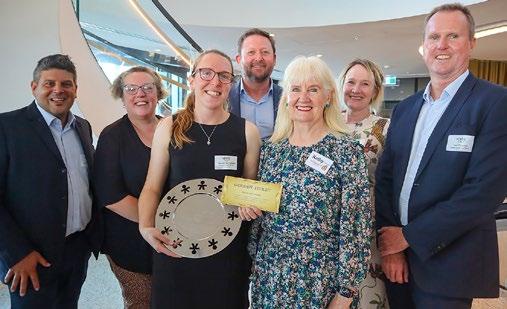
With four years’ experience in planning, Tahnae McCormack exemplifies excellence as an emerging leader at the South Gippsland Shire Council. A participant in the Aspiring Leaders program, Tahnae has undertaken targeted development in leadership, equipping her with the skills and confidence to pursue growth opportunities. This commitment to professional development recently saw her take on the role of Coordinator in the Statutory Planning team where she has demonstrated remarkable capability, resilience, and an unwavering dedication to continuous improvement.
Tahnae has been instrumental in driving Council’s Business Friendly Councils Initiative – a project aimed at fostering economic development by streamlining processes and improving relationships between local councils and businesses. Her work has helped reduce administrative barriers for businesses and strengthened communication; ensuring local enterprises can thrive and contribute to the regional economy.
Her innovative thinking in farming and agricultural planning has played a key role in fostering sustainable development practices that balance economic growth with environmental responsibility and enhance regional resilience.
A passionate mentor, Tahnae guides student planners while fostering collaboration and trust within her team. Her leadership style inspires confidence and nurtures the next generation of public sector professionals.
Tahnae’s ability to anticipate future challenges, adapt policy frameworks, and embrace opportunities for growth, positions her as a thought leader in the field. Her dedication to excellence and a progressive mindset make her a deserving winner of the Kathy Mitchell Award. Tahnae embodies the initiative and vision that drive the Victorian Public Sector forward.
Congratulations, Tahnae.
The Kathy Mitchell Award recognises excellence in a young professional working in the public sector. As such, it truly means a lot to me that I was thought of as a nominee, let alone the recipient of the award.
The “VPELA Golden Ticket” brings with it some great opportunities to further develop my skills and knowledge in my career as a planning officer at South Gippsland Shire Council, and to make new connections and learn more about the diverse opportunities in the public sector.
I am looking forward to attending VPELA events throughout the year and incredibly grateful to VPELA for providing this opportunity. I often hear it said that public sector work is a thankless role, however I have always felt fortunate knowing that the work I do has real impact in my community.
The award recognises the contributions of public sector employees working in the planning and environment or related sectors, and the outcomes this work has for the community. It is an honour to be recognised in this way, as the award exemplifies the traits and values I hold dearly. I have been lucky in my career to have worked under some great leaders who have helped me develop as a professional, build business and political acumen, and seize a plethora of growth opportunities. One of whom is Nick Moore, my Acting Manager Planning and Building Services, and who is one of the people I have to thank for my nomination. I am immensely grateful for Nick’s support and mentorship, and for the trust he has in me to take on higher duties.
The other person who I have to thank for the nomination is Lucas Gardiner, my Director Future Communities. I deeply respect Lucas as a leader and as a man of his word. He has been invaluable in my career progression and one of the main reasons I became a town planner.
I am fortunate to be surrounded by a great team that has supported me to grow and develop as a planner, and as a professional. Receiving this award shows what can be achieved with the right people around you, and it means a great deal to me. I endeavour to reflect the ideals it represents.



VPELA’s first Reconciliation Action Plan (RAP) was launched at the Summer Soiree on 6 February by President, Mark Sheppard. He thanked all those in the VPELA community and Reconciliation Australia who have made it happen and in particular Board members, Mia Zar and Sarah Carlisle and YPG Committee member, Chloe Moorcroft who have been instrumental in developing our RAP and having it approved and endorsed.
VPELA recognises that Aboriginal and Torres Strait Islander peoples have been caring for Country sustainably for tens of thousands of years, and that they have a deep well of knowledge in environmental planning.
Recognising, understanding and respecting First Nations cultures is an intrinsic part of good planning and environmental practice, and promoting cultural understanding has an important role to play in the journey towards reconciliation.
This is why VPELA has developed a RAP to guide a program of initiatives to promote awareness of First Nations cultures, practices, knowledge and issues.
The beautiful artwork on the cover of the RAP was created by Ranga, a Mutti Mutti/Latji Latji artist residing on Wadawarrung Country. He comes from a creative family and has been painting for three years.
Ranga’s art practice has helped him learn patience, the ability to manage emotions and ways to connect to culture and people. The story of this piece is “Each step we take leads us to a new pathway to our future. Some may lead us back, but it is up to us to find a solution to stay on track.” This story is reflective of our aspirations for the delivery of the RAP, encouraging us all to move forward with purpose in our Reconciliation journey.

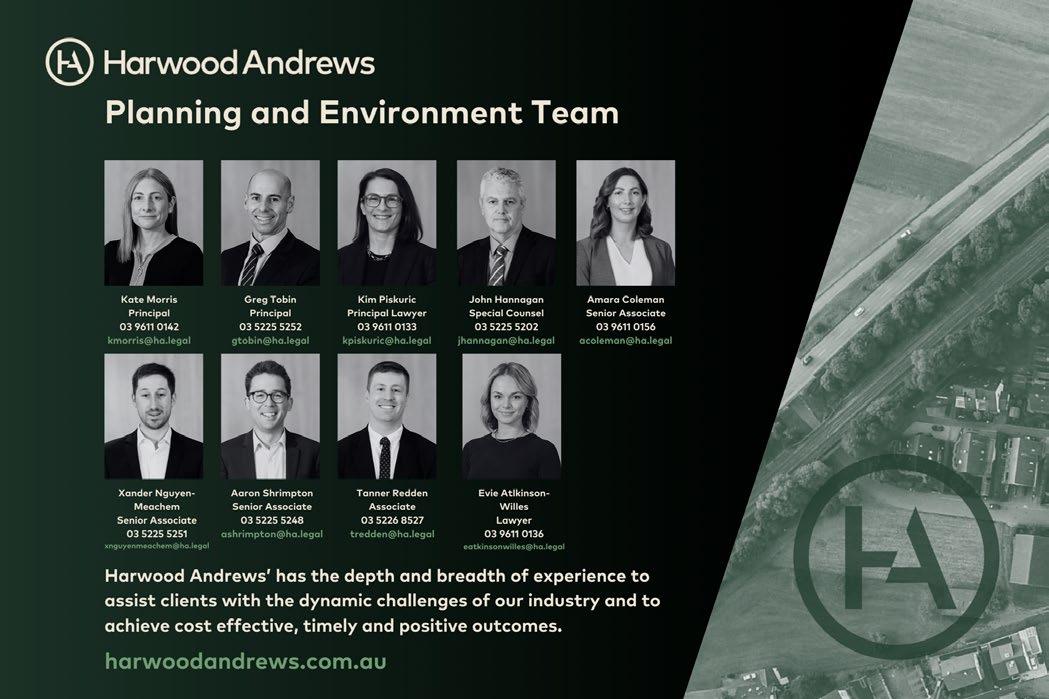
From your correspondent:
If ever there was a time for a good drink among planning folk, it was late December ‘24. The cost-of-living crisis had taken its toll, and the thought of a decent bottle of wine required serious budgetary forecasting. But amidst the financial doom and gloom, the 2024 VPELA Christmas Party once again delivered a night of laughter, camaraderie, and just the right amount of industry intrigue; with plenty to gossip about! Is it true that such and such were seen together at the Waterfront after a particular gruelling appearance? How we spar then share joy.
The Yarra, Melbourne’s ever-sombre river, shimmered in the early evening light, setting the perfect scene for an event that has become an essential punctuation mark in the urban planning calendar. There was an undeniable buzz in the air – perhaps it was the enthusiasm of weary professionals eager to shake off the year’s challenges, or maybe it was the delights of charming waiters carrying full glasses and spruiking nibbles. Everywhere one turned there were faces of joy. Laughter rose as the night progressed. Oh, we are a disparate but happy tribe at VPELA. There’s never enough time to circulate and share Christmas spirit.
As always, the crowd was a fascinating mix. Graduate planners, bright-eyed and full of optimism, mingled freely with the city’s sceptical warhorses, their conversations bouncing between discussing summer holiday plans and opinions on the new empire look, evident in the prevalence of purple. Yes, there was a strange vibe of mild, hopeful interest in the new era of disruption that was awaiting for us; we seemed at that moment on the edge of a new dawn.
The speeches were refreshingly succinct – our beloved President, ever the crowd-pleaser, struck the perfect balance of gratitude, humour, and optimism. The rising stars of the profession were honoured with well-earned accolades, raucous applause, and a collective sigh of relief when the formalities wrapped up just as glasses were, or were nearing, empty.
When your correspondent is old and weary, and looks back and recalls this past summer’s VPELA Christmas ‘do’, memories of it will be fond. It contained moments as fleeting as a spring night’s dream.
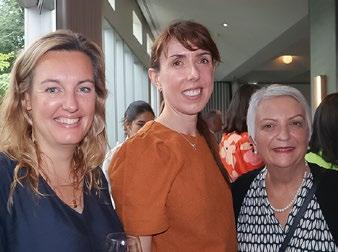



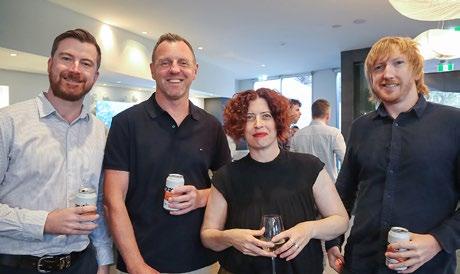
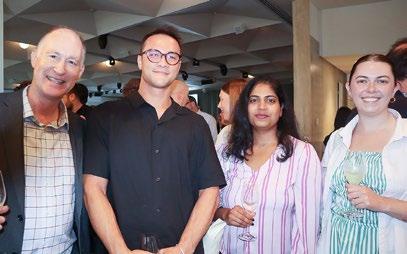

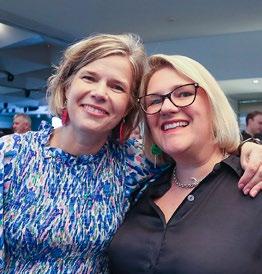
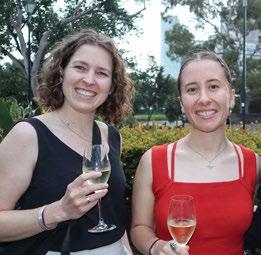

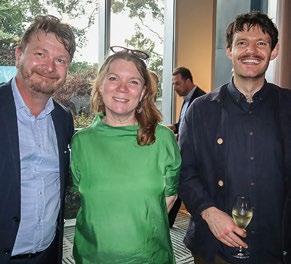
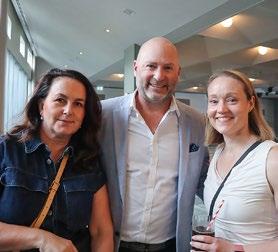



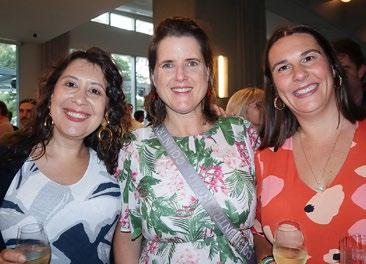

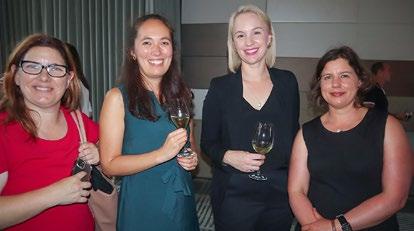


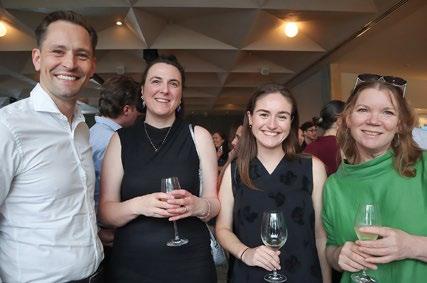

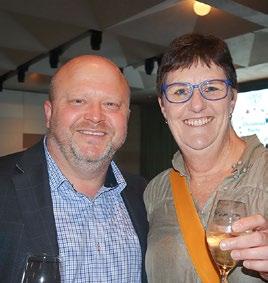


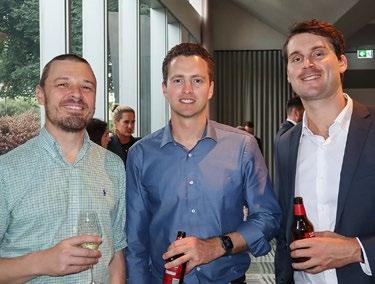

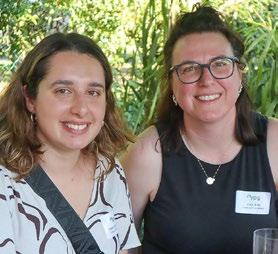






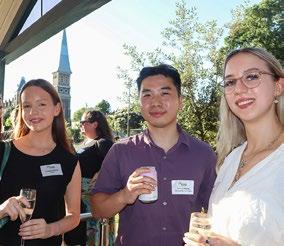
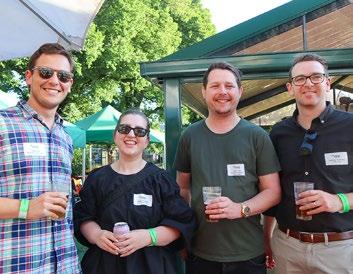







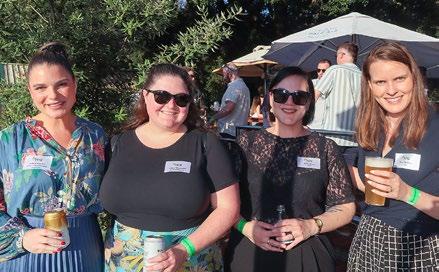

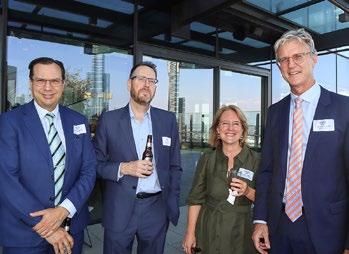
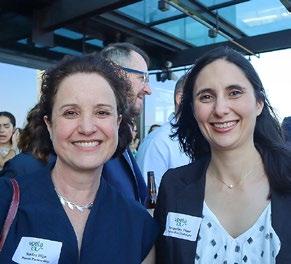
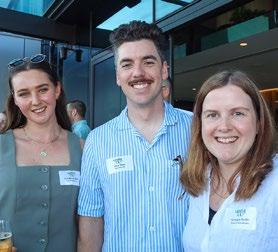



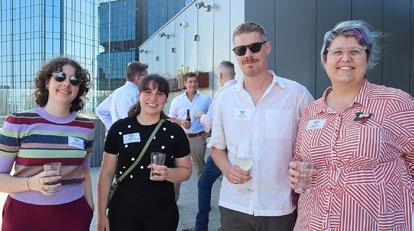







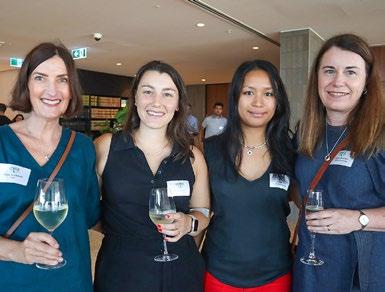


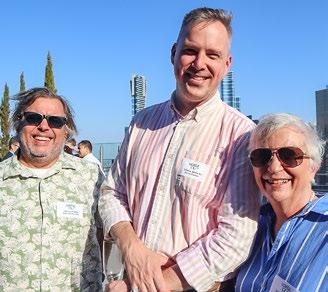
In November, VPELA hosted its first Reverse Seminar at KPMG Geelong to unite professionals involved in and on Central Geelong projects. This event was a follow-up to the well-attended Introduction to Amendment C431, addressing feedback that participants wanted more time for discussion. The Reverse Seminar deviated from the traditional panel format, allowing attendees to directly discuss insights from the new controls with guided discussions led by Anna Borthwick, Grant Logan, and Chloe Moorcroft.
The main topic was the Central Geelong Framework Plan, adopted in March 2023, which provides detailed land use and built form controls for the Geelong CBD and fringe areas. During its preparation, uncertainty about key design factors like building height and mandatory overshadowing controls left many developers uncertain, resulting in projects being put on hold. After 18 months of implementation, the seminar aimed to gather feedback on how the Framework Plan was functioning and its reception within the development community.
Held in the Yarning Circle at KPMG’s Geelong Office, the seminar offered panoramic views of the city, Corio Bay, Eastern Gardens, and surrounding suburbs. Attendees were able to appreciate the complexities and size of Central Geelong while spotting the numerous cranes peppering the skyline, particularly near the new Exhibition Centre.
Matthew Fletcher, a passionate Geelong advocate, set the scene by presenting the Geelong Economic Blueprint prepared by KPMG. His presentation highlighted why shaping Central Geelong is crucial, noting that Geelong has the largest regional CBD by worker numbers in Australia, outpacing cities like Newcastle, Wollongong, and Gold Coast. Fletcher emphasised that the construction industry in Geelong remains strong, supporting 11.8% of the workforce as the second largest employment industry.
Geelong’s lifestyle opportunities are a significant draw for people wanting to live, work, and play in the region, reinforcing that the renewal of Central Geelong to enable city living will play a contributing factor toward this in the future.
The Reverse Seminar included a diverse mix of attendees, such as town planners, traffic engineers, lawyers, environmental consultants, urban designers, state and local government representatives, property developers, real estate specialists, and even an engaged community member who kept everyone on their toes.
The discussion kicked off with Central Geelong’s controversial Market Square site, questioning whether the Framework Plan provides realistic expectations for its future, given its significant potential and current underdevelopment.
Reviewing the controls from an economic feasibility perspective sparked debate in the room, highlighting that most major developments in Central Geelong have been state-led or state-supported. This raised the question of where private investors are, with the consensus that more people working and living in the CBD is essential and drawing comparative conversation about the success of Melbourne’s Postcode 3000 initiative in achieving this in the past.

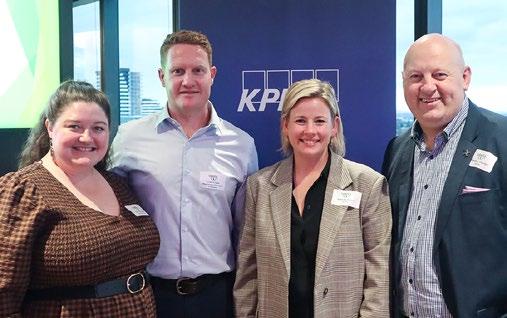
The conversation naturally shifted to addressing car parking in the CBD, something that always sparks debate. Various opinions were shared, with a communal agreement that Geelong residents need time to transition away from car dependency, and major improvements in the public transport system are necessary to support this change.
The evening concluded with light canapés and drinks, allowing conversations to continue.
As an experimental event typology, the Reverse Seminar was wellreceived, with lots of positive feedback shared on the night.
This event would not have been successful without the engaged professional community who felt comfortable sharing their experiences and thoughts in a respectful and dynamic way.




Our experienced team of lawyers and town planners provide specialised advice, strategy and representation to a wide range of developer and childcare centre operator clients in all planning and approval related matters.






www.pppartners.com.au


13/1 Collins St, Melbourne








I departed VCAT in October 2024, to become a foundation Senior Member at the new Federal Tribunal, where I continue to practice administrative law. Whilst changing roles, an opportunity arose to take two months’ long service leave, so I visited six European countries. Two trip highlights were spending time in Barcelona and Copenhagen, which had both intrigued me. The obvious stand-out architectural feature of Barcelona is its Antoni Gaudí designed world heritage listed buildings including, notably, the (finally complete) Sagrada Familia Cathedral which had 4.7 million visitors in 2023. However, the plannernerd in me was just as interested in the way in which 1850s Barcelona struggled with very high densities and disease. In response, some of its medieval walls were demolished to create an exemplary district known as the Eixample.
This urban area was purpose-designed by the visionary planner IIdefons Cerdà. Taking a more scientific approach with a view to health benefits, Cerdà’s plan laid out wide streets and the now iconic octagonal superblocks, with chamfered corners. Each superblock originally had its own open internal courtyard, although today they are frequently built-out. Cerdà’s plan was considered radical and the local council at the time rejected it, but the plan was imposed anyway by the Spanish Federal Government.
Our apartment in Eixample gave me an elevated streetscape view of the Catalonian Art Nouveau architecture or the ‘Modernisme’ style. I was really impressed by the retention of the chamfered street corners, creation of tree-lined pedestrian thoroughfares and the largely intact typically five-storey charming façades with numerous balconies.
Other planning standouts in inner Barcelona include the partial undergrounding of the waterfront freeway in preparation for the 1992 Olympics, enabling excellent pedestrian connectivity from the CBD to the redeveloped waterfront. I also loved the quaint 1931 teleferic (cable car) connecting the waterfront to Montjuic where the Olympic stadium and diving facilities lie, which saved my sore feet for a moment.
On the other side of the ledger, there were some quirky features of the Eixample streetscape. Some of the contemporary infill buildings seemed unsympathetic choices with their design aesthetic and use of


materials. Large overflowing rubbish collection bins on intermittent corners were a little visually confronting. The base of the street trees were set much lower than the footpath, that created a regular ‘chasm’ to fall into. As with Melbourne, Barcelona’s CBD would benefit from additional green open space (this aspect of Adelaide impresses me).


Later in Copenhagen, where it got down to minus 3 degrees (yikes), I was struck by the city’s very photogenic river-side location and associated canals. We stayed in an inner city suburb and utilised a driverless train to the CBD that arrived every 3-4 minutes! Our funky and space efficient apartment in a social enterprise/co-working complex featured retractable stairs leading up to a small mezzanine level where we crawled to our bed. Good to still be limber!


Along the CBD river-edge, major new institutional and mixed use contemporary buildings sit very comfortably alongside attractive period buildings. Key contemporary works here include the striking ‘Black Diamond’ extension of the Royal Danish Library, the Blox mixed use building featuring the Danish Design Museum and the Copenhagen Opera House. The refurbished dockside warehouses were very appealing as residential options.
Overall, the planner in me found inner Copenhagen a delightful fusion of outstanding period buildings and a commitment to inserting quality modern architecture in prominent inner city locations. I also found it clean, easy to navigate with efficient transport options and it demonstrated a high level of public trust, as evidenced by a large contingent of unlocked bicycles. What’s not to like, apart from paying $12 for a large latte!

Back in Melbourne, I am very grateful for all the friends I have made through my time at VCAT and hope to retain same. It’s been enjoyable to be significantly involved in VPELA activities, meeting and mentoring new people and discussing the planning issues of the day. Being a member of VCAT’s Planning List is both an honour and a major responsibility. Conscious of this, I hope I have issued a raft of fair and sensible decisions in a timely way, sprinkled with some light relief in my courtcraft.
With my new workplace situated only a block away from VCAT, you might still see me around the traps. Wishing everyone all the best for 2025 and beyond.
Philip Martin’s article is written in his capacity as a former Senior Member in VCAT’s Planning List and the views expressed in it are personally held

Rory’s Ramble is normally about different aspects of community and development but today I thought I’d provide a bit of an overview of our planning system as it affects what we are trying to achieve in delivering affordable housing for the people of Victoria.
In the old days, planning was done by the municipal engineer but responsibility has evolved over time. In 1997, the Planning and Environment Act 1987 was amended, but since then the Victorian planning system has become increasingly more convoluted, difficult to navigate and more costly than ever.
For many seeking planning approvals, whether they be for simple or complex proposals, it seems that planning processes are geared to look for problems, not solutions. Added to that, are increasing environmental issues and other requirements that need to be considered.
When the Growth Areas Authority was established in the mid-2000s, it promised 15 to 18 months from ‘farm gate to front door’. It didn’t happen and now in the mid-2020s, this is far from any sense of reality.
In the mid-teens, we had ‘smart planning’, a multi-million dollar government project that was meant to free up the planning system to make it less complex and more user friendly. It didn’t, rather it added additional layers and made planning even more complex.
Then there was ‘planning reform’ in the early 2020s. Again, it has not achieved any meaningful improvements to the planning system. Where is the accountability within government for these actions, the cost of these programs and the lack of positive outcomes? The onus has been and will always be on the landholder, the applicant, the proponent, the developer to ‘prove it’ and to make a case for any development proposal. The amount of work, review, studies, VCAT and review processes and the like are forever increasing, adding significant cost to any proposal.
A Precinct Structure Plan now comprises approximately 120 documents/reports, which is a crazy amount of material compared to what was once intended.

Rory Costelloe, Founder and Executive Director, Villawood Properties

From a developer’s point of view, the land tax/interest bill alone on holding a very large parcel of land during the rezoning process could easily cost $5 million to $10 million. This is money far better spent putting it into the project to deliver affordable housing to the community, as infrastructure, rather than to the State Revenue Office as land tax, and the banks as interest.

Many times, one has thought the appropriate amount of work was complete, when someone from a council, agency or the community seems to think there may be a significant planning or environmental issue left wanting, so yet more work is required. This can add layer upon layer of cost and time requirements – without any justification for, or proof of, the claim. Maybe there is the need for more accountability from those seeking the information – the onus of proof should or could be on those suggesting there are further issues to be explored.
In Villawood’s case, we provide diverse residential communities for people to live in. We want to be able to provide these in a cost-effective manner to enable first home buyers, key workers, downsizers and upsizers, and others the best possible opportunity to enter or re-enter the critical housing market – all in line with government expectations. We have a proven record of delivering excellent communities, yet we now wait years getting to first base when trying to develop housing in new communities.
The due diligence developers and proponents undertake prior to a potential rezoning or major permit application is already adding significant cost to a project. Time costs money, and lots of it.
Far from achieving ‘farm gate to front door’ in 18 months, it now takes several years just to undertake the work required to prepare for
rezoning or development applications for new growth in areas already identified for growth, let alone to get it approved.
When there has already been an extensive strategic planning process – such as the now gazetted Geelong North West Growth Strategy that went through a significant public process – surely landholders should be able to prepare the precinct structure and development plans without further public input?
Yes, there needs to be liaison with Councils and relevant agencies and landholders, but in cases where land has already been ‘signed-off’ for growth, why have another public process? What is there to prove in this case?
We need and want to be able to get on with our program of work to provide housing in a timely and cost-efficient way. We have already proved our credentials.
Now that the new Secretary, Jeroen Weimar, has commenced at the Department of Transport and Planning, we look forward to timely consideration and significantly improved process outcomes on these important state-wide issues.
Rory Costelloe is founder and Executive Director of Villawood Properties
We love seeing UPco’s team grow from strength to strength, and we’re delighted to have recently welcomed two new additions to our line-up: Sally O’Sullivan Senior Planner) and Victoria Hadfield Planner). May this be the start of a long and successful chapter in your careers, and for our team.
Meanwhile, Senior Associates Kate Foldi and Holly McFall too to the fairway at the Let’s Beat Bowel Cancer Golf Classic, an annual fundraiser for critical and lifechanging early intervention and research.
rom fostering new talent to
re





The evidence of Australia’s negative economic productivity pathway is now stark. The decline in our community’s standard of living is stuck and will extend into the second half of the decade, and possibly longer. We, in the ‘development approvals industry’ are not spectators of this decline. It is a truism that as participants, we have benefited from a growth in processes, procedures, consultations, referrals, assessments, and hearings. And for what outcomes? There is the old line about ‘processes overpowering outcomes’ and processes now are applied and operating ‘on steroids’.
Processes pervade the whole economy – from Woodside undergoing a 6-year process of approvals and then facing new hurdles, down to a small business owner requiring a permit for a modest sign, or (in a now extended process) a permit to remove stored earth material from a site. Never mind that the stored earth was placed there by my client after a construction job on a different section of the same site.
It has been stated that the problem is that ‘regulation has no natural predator’. That is, there is no activity/change which might cancel out ‘this or that’ rule/regulation. This allows laws and regulations to multiply and permeate almost unchecked as authorities seek to close loophole after loophole, but almost always with wider consequences for getting even the simple works on the ground.
Regulation and process growth is very much part of the housing affordability and housing availability crisis that we now face. Diminishing housing affordability sees many in the community unable to purchase a ‘first’ home. On the matter of supply, Victoria will record a net increase in dwelling numbers of somewhere around 45,000 in 2024. This contrasts with the State Government 2023 target of an average of around 80,000 dwellings per year. Ignore the Government ’spin’, we are falling further behind each month. We have a multiplicity of ‘good initiative’ regulations on housing construction. One of the outcomes is that housing costs are now so high that a large section of the community cannot afford all that ‘goodness’.
And the October 2024 State Government ‘blast’ of housing initiatives aimed at increasing housing densities around transport ’zones’ has

Bernard McNamara, Director of BMDA Development Advisory
already been called out as being commercially unachievable in the current and forecast construction costs environment. Put simply, until there is a significant reset in purchase cost versus total development cost, affordable, medium and high-density apartment production will remain low. Note, too, that construction companies lead the industry table of highest numbers of company bankruptcies/liquidations.
Where affordability of dwellings may be achieved is in the growth areas. These areas offer families single dwellings with the amenity of a garden and with more room than is normally the case in an apartment. It’s not the only housing solution, but an important part of it.
Critics of outer area development have rightly called out the lower level of liveability because of the dearth of transport, jobs, and community infrastructure that is found in these outer suburbs. One might ask why so much of the Development Contributions and Infrastructure Contributions funds collected from estate developers (but contributed by homeowners) has sat in the State Treasury –unallocated for, sometimes, years? Again, the funds are not the solution, but a valuable part of it.
And the situation where newer suburbs have less accessibility and resources is, at its heart, a matter of government choice. We are the victims of a State Government which has chosen to allocate billions of borrowed funds into the unjustifiable Suburban Rail Loop (section 1 only!). This (eventually) will increase the pool of infrastructure into areas of Melbourne which on most measures already boast superior community infrastructure. In choosing the SRL, the State Government has rejected relatively lower cost opportunities (and more needed projects) elsewhere. In confining its choice to transport projects, the Government has not preferred the duplication of the Upfield railway line beyond Gowrie Station (near Fawkner), the extension of railway lines into the Keilor area, with a link to the Airport (which the Feds would back), or the electrification of services into the Wallan growth area. Linking these areas with efficient railway services would go some way towards much improved liveability for families in these outer suburbs.

So, what steps could we take to reset the way that Melbourne and the commuter regions are planned and resourced?
In seeking to encourage a re-set on how we manage urban development etcetera, I am indebted to Greg Bursill who recently produced a 10-point plan to provide more housing and more liveability in the growth areas. Greg’s shorthand list (with my comments) is set out below.
1. Lower housing costs by diverting materials and labour from large State-funded projects and direct these into housing and infrastructure in the growth areas. The ruinously expensive and unjustified Suburban Rail Loop would be the first to be paused, together with a rescheduling of level crossing removals. $12 billion could be freed up.
2. Extend metropolitan rail services into the growth zones and peri urban areas. Develop fast rail to the major regional cities, of Geelong, Ballarat, Bendigo and Warrigal.
3. Reform and fund an effective bus network. I urge readers to spend some time in Sydney and see how effective a working bus network can be.
4. Convert rural freeways to urban standards eg Hume Freeway to Wallan, Western Freeway.
5. Provide State funds for community infrastructure – swimming pools, libraries, and required community facilities (which are taken as given in most suburbs).
6. Land supply: Set a 10 year programme and infrastructure coordination and stick to it! It is fine to talk of 70:30 established areas: growth areas but Victoria’s construction industry simply cannot deliver it.
7. Integrate water, drainage and urban services to avoid the
These practical and deliverable set of liveable initiatives might not suit the theoretical mindsets of some in power. Their adoption would require a ‘walking back’ from major high-profile projects/contracts plus a pivot towards incremental community building, with urban services funded as these occur. But currently, there is no plan nor sufficient funds to address the deficient situations within the ‘classtwo suburbs’; existing or planned. Would a fully serviced and fastconnected Ballarat, with a population of one million be a better outcome than a bigger Tarneit or Melton?
We all await Plan Victoria, but we know that the ‘Kool aid’ has been consumed, with the SRL fully included.
So how should we do this?
Let us start with a ‘solutions dump’. Let’s bring together the deliverers in our development system- the financiers, the builders, the wouldbe home buyers, the community builders and a small number of regulators. The regulators’ roles would be to document the changes and advise how we best tear up plenty of processes which weren’t around when most of our best areas in Melbourne were built. Of course, we need new solutions, not a return to the old. But a review of the basics before we add every authority’s wish list/cost shift might help.
Bernard McNamara is a former editor of the VPELA Revue and is a Director of BMDA Development Advisory. Greg Bursill, referred to in Bernard’s article, is presently with the Melbourne Business School and has extensive advisory and practical experience in the greenfield planning and development sector.






Myra Adiwijaya Student
Victoria Agahi Aitken Partners
Rhys Armstrong Port Phillip Planning Consultants
Dhruti Atha Student
Hayley Bacic Student
Aishwarya Bhardwaz Tract Consultants
Liam Brady WSP
Alyssa Britnell Student
Nelson Buchholz Department of Transport and Planning
Michael Churilov Contour Consultants
Anthony Cirocco Cogency
Daniel Cooper Echelon Planning
Jessica Critchley-Roy Maddocks
David Deller Victorian Bar
Esther Diffey SLR Consulting Australia
Kayley Dixon Mecone
Amelia Donati Russell Kennedy
Kalinda Doyle Corrs Chambers Westgarth
Holly Edgerton Maroondah City Council
Rebecca Fraser EHS Support Pty Ltd
Max Gardiner Jewell Partnership
Sam Granger Charter Keck Cramer
Angela Gregore AW Maritime
Louise Hill Umwelt (Australia) Pty Ltd
Ella Hockley Hunt & Hunt Lawyers
Ethan Holden Hunt & Hunt Lawyers
Carlo Holden Marshall Day Acoustics
Mark Hughes Merri-bek City Council
Mia Ifergan Department of Energy, Environment and Climate Action
Tara Jamalishahni Student
Edwina Jans GML Heritage
Dana Jeffrey EMM Consulting
Lee Ka Sin Adelaide Student
Keren Kelly Tract Consultants
Anagha Khude Student
Madeleine Laws SLR Consulting Australia
Anna-Marieke Lechner-Scott Student

Tessa Leigh-Lancaster Matheson Stephen Valuations
James Lesh Heritage Workshop
Sarah Hui Li proUrban
Sophia Lim Joon Department of Transport and Planning Bendigo
Lily Lockley Ratio Consultants
Tamara Lowen City of Stonnington
Sarah Lydon Ecology and Heritage Partners
Tahnae McCormack South Gippsland Shire Council
Yazi Medinne Hume City Council
Jarrah Mosco-klipin Echelon Planning
Enakshi Mukherjee Hansen Partnership
Dana Munnik Student
Ana Luisa Neiva Cardinia Shire Council
Romero Okikiade Melton City Council
Brad O’Reilly SLR Consulting Australia
Sally O’Sullivan Urban Planning Collective
Keaton Paterson Echelon Planning
Liz Patterson Liz Patterson Coastal Consulting
Sophie Pritchard Moyne Shire Council
Jacquie Randles City of Greater Geelong
James Reece onemilegrid
Arinah Rizal EMM Consulting
Nicholas Roebuck Habitat Planning
Sam Romaszko Melton City Council
Melissa Rowe Student
Maya Rychner Biosis
Erin Sartori proUrban
Dana Shine Baw Baw Shire Council
Cait Storr Melbourne Law School
Donna Taylor Bass Coast Shire Council
Connor Thorn Bass Coast Shire Council
David Trotter Traffix Group
Andrew Turner Foley’s List Barristers
Alexander Wierzbicki Urbis
Mike Willson Amber Organisation
Madeline Winneke Urbis
Arthur Xanthis Greater Melbourne Surveyors
VPELA is pleased to invite applications for the VPELA Young Professional’s Award for 2025. This highly prestigious award is open to VPELA members between the ages of 18-35, who have been members of the Association for at least 18 months. The Award includes a trophy and cash grant of $5000 to support the recipient in undertaking independent research (domestic or international), or a course of study related to their industry, as well as opportunity to speak at our Fellows Dinner in 2026.
Applications close 4 April 2025
Proudly sponsored by

Download the qualifying criteria and application form here https://www.vpela.org.au/about-vpela/awards/young-professional-award
For my Honours thesis in Urban and Regional Planning at RMIT University last year, I investigated factors influencing playspace quality in Melbourne’s greenfield developments.
Despite the importance of play for child development, playspaces tend to be marginalised in policy and practice. Australian playspaces frequently lack originality, characterised by metal and plastic structures, limited colour palettes, and a lack of natural elements. These spaces are often constrained by preconceived notions of play.
Poor playspace design leads to repetitive and restrictive play experiences, an over-reliance on standardised equipment, and narrow perceptions of what playspaces can and should be. This limited understanding represents a missed opportunity, especially in Melbourne’s greenfield developments, which see a high influx of families with young children.
I reviewed existing literature, and interviewed five landscape architects and three developers working in Melbourne’s greenfield developments to explore two key questions:
1. How do landscape architects and developers define playspace quality?
2. What influences playspace quality in Melbourne’s greenfield developments?
Key findings:
What defines playspace quality?
1. Diversity: A variety of experiences, catering to different ages, abilities, and interests. This includes both active and passive play areas, as well as diverse equipment and natural elements. For example, themed playspaces can enhance the experience but should not compromise functionality.

Inclusivity and Accessibility: Accessible to all children, including those with disabilities. Intergenerational design, catering to both children and adults, promotes social interaction and community building.
2. Nature-Based Elements: Natural elements such as trees, plants, sand, and water to foster exploration, sensory engagement, and connection to the environment.
3. Challenge and Risk-Taking: Opportunities for challenge and risk-taking to promote physical and cognitive skills, as well as emotional and social well-being.
1. Policy and Guidelines: Policies and guidelines significantly influence playspace design and implementation. However, inconsistencies and lack of clarity can create challenges for effective playspace development.
Maintenance and Resources: Long-term maintenance is a primary concern, leading to a preference for durable, low-maintenance materials. Budget constraints and rising construction costs can limit the scope and ambition of playspace designs.
2. Safety Regulations and Concerns: While safety regulations are necessary, they can sometimes be overly restrictive, hindering innovation and the inclusion of challenging play elements. Balancing safety with the need for risk and challenge is crucial.
3. Marketing Tactics: Marketing tools are often used to attract families and boost property sales. This can lead to highly embellished playspaces and a focus on aesthetics.
…continues over page Tasma Eddy, Undergraduate Town Planner, Beveridge Williams

4. Stakeholder Collaboration: Collaboration between state and local governments, developers, landscape architects, and the community is important to meet the needs of its users. This can be challenging in greenfield developments where communities are still forming.
1. Clearer Policy and Guidelines
º Comprehensive Guidelines: Guidelines should cover playspace equipment, accessibility, maintenance, and safety measures, while allowing for innovative designs.
º Adaptation and Flexibility: Policies should be regularly reviewed and updated to reflect current research on child development, play, and playspace quality.
º Funding: Governments and developers should allocate sufficient resources to ensure budget constraints do not compromise playspaces.
2. Proactive Stakeholder Collaboration
o Public-Private Collaboration: Improve communication and coordination between local governments, developers, and landscape architects to share knowledge, address challenges, and promote innovative solutions.
o Advisory Groups: Establish multi-disciplinary advisory groups with experts in child development, landscape architecture, urban planning, and community engagement to guide and support growth area councils and developers.
3. Alignment with Community Needs
º Community Engagement: Implement consultation processes from the earliest planning stages, involving future residents in design discussions and gathering feedback through surveys, workshops, focus groups, and online platforms.
º Transparent Communication and Feedback Loops: Establish clear communication channels between developers, councils, landscape architects, and the community, providing regular updates and opportunities for feedback through project websites, newsletters, public sessions, and Q&A events.
º Post-Occupancy Evaluation and Adaptation: Conduct regular evaluations of playspace usage and community satisfaction to inform ongoing maintenance and potential design adaptations, demonstrating a commitment to continuous improvement.
º Capacity Building and Empowerment: Provide resources and support to community members to enable effective participation in the planning process, including training workshops on playspace design principles and opportunities for leadership development.
For more information about the study, contact: eddyt@bevwill.com.au
Tasma Eddy in an Undergraduate Town Planner and part of the team at Beveridge Williams
Our planning and environment team has market-leading expertise across a broad range of industry areas, including property development, transport, construction, energy, waste and recycling and social infrastructure. We act for State government, local Councils, statutory authorities and the private sector. Our full service firm enables you, your projects and your communities to thrive.




Meg Lee – Partner
M +61 404 070 549
meg.lee@hallandwilcox.com.au
Natalie Bannister – Partner
M +61 409 418 259
natalie.bannister@hallandwilcox.com.au
Stan Kondilios – Partner
M +61 416 121 961
stan.kondilios@hallandwilcox.com.au





Rory O’Connor – Partner
M +61 400 436 175
rory.oconnor@hallandwilcox.com.au
Brendan Tobin – Partner
M +61 404 095 563
brendan.tobin@hallandwilcox.com.au


The 2024 VPELA Moot Court Program once again proved to be a fantastic showcase of legal and other professional skills, strategic thinking, and insightful discussions, as participants tackled complex planning, traffic and environmental law issues in a number of mock hearings accommodated in VCAT hearing rooms. As usual, the program provided invaluable industry and Victorian Civil and Administrative Tribunal (VCAT) experience, offering participants a rare opportunity to learn from real scenarios while honing (or for some, for their first time!) advocacy or expert experience in front of seasoned Tribunal Members. These experiences will undoubtedly prove crucial as participants progress their careers.
VPELA extends a big thank you to VCAT for hosting the moot hearings and, in particular to Senior Member, Michael Deidun and his colleagues for their skilled management of truncated hearings and their concise and constructive feedback. Thank you too, to Nick Tweedie SC, Juliet Forsyth SC, Jane Sharp, Jennifer Trewhella, Amanda Ring and Craig Murphy for their expert guidance, support, and enthusiastic commitment to the success of the program. VPELA also wants to express gratitude to all those who participated, without participants (and in some cases, their sponsor organisation), there would be no program. It is not easy to put oneself forward in a forum where many in the forum have considerable expertise, experience and reputations. Participant enthusiasm and dedication to the development of their professional skills and experience helped make the event a standout success yet again.
Finally, VPELA wishes to acknowledge the support of Ecology and Heritage Partners Pty Ltd for its continued sponsorship of the program and without which the program would not be possible.
This year we hear from three participants who acted as advocates in their mock hearings.

Heading into the program I was conscious that my own experience at VCAT was limited to compulsory conferences when representing Councils or others in the planning process. Heading into the program, my aim was to learn all I could about everything that follows when a compulsory conference does not settle the matter in dispute. At the first session, after introductions, I realised that everyone had different levels of experience and had entered the program for a variety of reasons.
The program offered a rare opportunity to have the guidance of three well-versed experts over three workshops. I found the workshops helpful in building my understanding of the roles and responsibilities that each role at the Tribunal entails, the foundation and elements of what makes a good case and good advocacy. The workshops offered the opportunity to practice calling and leading witnesses and an insight into the art of cross-examination.
The workshops were also useful in refining oral presentation skills and how to make an effective and concise argument.

Grant Logan, Manager, Department of Transport and Planning
The workshops focussed on how to best prepare for the hearing (in what whatever role you play) and puts the onus on you to do homework to prepare for each session. Ultimately, the more effort I put into the program, the more I got out of it and enjoyed the experience. Having had no experience with merits hearings, I found the Moot Court experience a fantastic opportunity to have a go at advocating in a real-world scenario, without the pressure of representing a realworld client. The program schooled participants in how to prepare for VCAT and best practice, with the preparation for the Tribunal starting well in advance of the night and involving getting (too) familiar with certain clauses of the Banyule Planning Scheme. The lead up to the moot session included question and answer sessions that covered all the small things that could otherwise catch one off guard and be a trap for young players.

As a local government town planner, participating in the Moot Court Program was an invaluable experience. It challenged me to step outside my comfort zone and develop essential advocacy skills; enriching my professional growth and deepening my understanding of effective communication and persuasive skills within the VCAT environment. I will continue to draw on and use the lessons learnt from each of the sessions in the program throughout the rest of my professional career.

Chun Guo, Ratio
I had always wanted to participate in the Moot Court Program, having heard great things from past participants – and it certainly did not disappoint! It was an incredible experience to be part of the program and learn from some of the best in the field. There is no better feeling than expanding your knowledge and gaining new insights.
Some of my favourite aspects of the program included Nick Tweedie SC’s case theory, Juliet Forsyth SC’s notes, real VCAT case studies, and the collaborative nature of the sessions. Working in groups to discuss cases and prepare homework reminded me of my university days, making the learning process even more engaging and enjoyable.
As the final night approached, I was, admittedly, quite nervous. However, the program provided detailed guidance on how to prepare for the moot hearing, which was incredibly helpful. On the night, the Tribunal Members fostered a supportive and encouraging environment, offering constructive feedback that made the experience truly valuable. The program not only deepened my understanding of advocacy but also significantly boosted my confidence in presenting cases before a tribunal.
Grant Logan is the Manager, Development Approvals & Design, State Planning Assessment and Facilitation with the Department of Transport and Planning. Grant, Ellen Tarasenko, Principal, Polis Legal, and Lucy Eastoe, Senior Associate, Arnold Bloch Leible coordinated the very successful 2024 program
Imagine stepping into your local shopping centre car park. A vast expanse of asphalt sprawls before you, neatly lined with parked cars. A walkway guides you toward the entrance and, just ahead, a zebra crossing beckons. A silent promise of safety. A legal shield between you and the moving traffic.
But what if that promise is an illusion? What if the legal protection you assume is there, is fragile, perhaps even non-existent?
This uncomfortable truth extends beyond shopping centres. Hospitals, schools, sports facilities – places where safety should be unquestionable, may all share the same hidden risk. Every time you step one on of these crossings, you may be placing more trust in it than you should.
The signs that accompany and typically define a zebra crossing are a Major Traffic Control Device (MTCD), a category of traffic controls that support the road rules and convey critical information to road users. Also included in the MTCD category are speed limit signs, traffic signals, Shared Zones, and Give Way or Stop signs, among many others.
The need to comply with implicit instructions from a MTCD is outlined in the Road Rules and Road Safety Act. The plain English interpretation of the Road Safety Act and the Road Safety Road Rules suggests that traffic control devices do apply in off-street “road related areas”. However, supporting policy and process documents from the Department of Transport and Planning (DTP) suggest that it is legally questionable as to whether traffic control devices can be enforced and, by association, whether they need to be adhered to at all on private land.
Legislation requires that the DTP must authorise the use of any MTCDs, and it is an offense under the Road Safety (Traffic Management) Regulations 2019 to use a MTCD without the appropriate authorisation.
Recent engagement with DTP on this matter has confirmed its policy decision to not approve any MTCDs unless there has been a specific order to extend the provisions of the Road Safety Act and Road Safety


James Dear, Director, onemilegrid
Road Rules to the site. This requires a complex, time-consuming and costly series of discussions with landowners, Councils, all the way up the chain to ultimately obtain Ministerial approval. Many railway station car parks and car parks (including at Narre Warren, Berwick, Aircraft and Wattle Glen stations, and Bendigo Marketplace Shopping Centre) have completed this process.
Unless you’ve completed the necessary discussions and other preparatory tasks, any new MTCDs won’t be authorised by DTP, can’t legally be installed, and may not carry any legal weight or protection for road users. Similarly, this means that any existing MTCDs that have not had the legislation specifically extended to include private areas may also not be enforceable.
This presents a challenge for traffic engineers, architects, urban designers and landscape architects working on new projects. Designers must exercise a degree of caution when including these features, particularly zebra crossings, which can be a point of conflict and crash risk between vehicles and pedestrians.
Before pushing ahead with the use of a Shared Zone, speed limit signage, zebra crossing or other MTCD in a new project, I would recommend first seeking a Section 98 Order to extend the Act and Road Rules to cover the car park and roads within the site and, second, offer very clear advice that any designs including MTCDs in off-road areas may not be legally enforceable.
In practice, a well-designed scheme should resolve most risks, as many drivers and pedestrians will just do the right thing. But if a MTCD is implemented without proper approvals and a crash does occur, this potentially places the designer or landowner at risk of liability for unauthorised implementation, could allow a law-breaking driver to escape without penalty, or potentially negate the opportunity for an innocent party to seek compensation for injuries or property damage.
So, the next time you’re about to step out onto a zebra crossing in a shopping centre car park or hospital, perhaps check with a lawyer first.
James Dear is a Director at onemilegrid
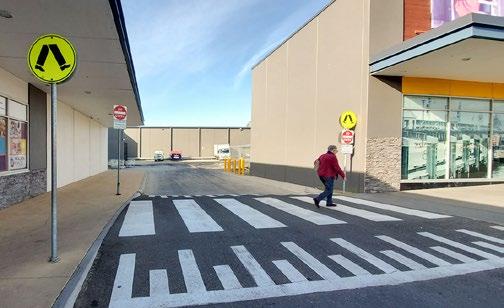

Most days the words ‘housing crisis’ are uttered in one setting or another. However, in Shak Developments Pty Ltd v Hobsons Bay CC [2024] VCAT 1093 the question of substance to accompany the talk was considered. The responsible authority had refused a townhouse application within the RGZ on underdevelopment grounds and in support of its position made submissions regarding the need to provide more housing where possible. The Tribunal stated:
25. The council submitted that it is: ...well established and accepted that the state of Victoria is currently facing a ‘housing crisis’.
26. In making this submission, it cited Simons v Banyule C which said:
9. It is well known that the state of Victoria is facing a housing crisis. Victoria’s Housing Statement released in September 2023 ‘The decade ahead/2024-2034’, identifies that right across Australia finding an affordable home is becoming harder than ever. This statement further identifies that Victoria is setting a target to build 800,000 homes in Victoria over the next decade. To put it simply, more housing is required in Victoria.
27. However, when questioned at the hearing, the council agreed that there has been no change in planning policy in recent times to respond to this issue. The council also did not identify that the document referred to in the extract from Simons above, formed part of the Hobsons Bay planning scheme.
28. I agree. Whilst there has been policy in the planning scheme at a state level, and in local policies in most metropolitan councils for many years regarding further intensity and diversity of housing types, there has been no measurable shift in planning policy at a state level in more recent times in response to the ‘housing crisis’. Therefore, it is difficult to give any weight to such a claim in support of the council’s position on this permit application.
This is like the comments of the Tribunal in 25-29 Keilor Road Essendon Pty Ltd v Moonee Valley CC [2024] VCAT 379 where it stated in relation to Victoria’s Housing Statement:
133. In making these findings I record that I have considered the VHS, which in the circumstances I may do – but am not compelled to do, again noting that the VHS is not a background or incorporated document in the planning scheme. At its core, the VHS indicates that an accelerated rate of housing growth is now required. It identifies an ‘initial 10 activity centres across Melbourne’ including North Essendon MAC around which ‘clear planning controls’ are to be introduced to accommodate a combined total of 60,000 additional homes.
134. However, there are as yet no changes to the planning scheme to give effect to this broad statement of intention…

Hew Gerrard, Senior Associate, Glossop Town Planning
Whilst the introduction of various particular provisions and the activity centre program are designed in part to address this ‘crisis’, given a ‘crisis’ is generally considered an event as opposed to a perpetual state, it will be interesting to see whether any specific policy changes are made.
What natural ground level is can depend on how far back in time one may wish to look. In Coda One Pty Ltd v Stonnington CC [2024] VCAT 1022 the Tribunal addressed the commonly held ‘two views’ and stated:
88. We disagree that there are two approaches in the decisions of the Tribunal with respect to natural ground level. In reviewing the decisions of the Tribunal relied upon by the parties, we conclude that each case turned on its facts, circumstances and the evidence before the Tribunal.
89. Importantly, we agree that in considering the facts and circumstances of each case, matters such as manipulation of the land, previous land use and development and absurd or artificial outcomes are all relevant in the determination of natural ground level.
90. We also agree that as the ‘fact finder’ we may have to rely upon incomplete evidence, or interpolations or inferences. However, it is also important to acknowledge that the focus must be on evidence and what can be reasonably inferred or interpolated from that rather than supposition or bare assertions.
As clear as natural ground level!
Tully v Moonee Valley CC [2024] VCAT 908 involved a seemingly innocuous secondary consent request to roof a pergola on one of two dwellings permitted under a single permit and which had been subsequently subdivided into two lots. Council refused the request on the basis it resulted in the minimum garden area requirement under the zone not being met. The Tribunal first found that for the purposes of the secondary consent request, that just the subdivided lot rather than the original property formed the planning unit. It then went on to state:
21. On the other hand, in the circumstances here, I find that it is misguided and incorrect for Council to simply assume that the GRZ ‘mandatory minimum garden area’ requirements continue to apply in a mandatory way to this ‘secondary consent’ application, in the same way that they did when the original permit applicant sought permission to develop the two dwellings on a lot.
22. That is to say, I find that the ‘mandatory minimum garden area’ requirement arising from the GRZ provisions is not an enduring requirement like the relevant planning permit conditions. Rather, the ‘mandatory minimum garden area’ requirements
were simply mandatory planning scheme controls to simply be applied at the time of the original planning permit application
23. I am unaware of any text in the relevant ‘mandatory minimum garden area’ provisions in the GRZ which give any hint or indication that such provisions in effect have a ‘mandatory indefinite life’ after the approved development is actually built. If the draftpersons of the GRZ had intended that such provisions needed to be applied in a mandatory way not just to the original planning assessment but then over the life of the as-built approved development, this could have easily been spelt out in the relevant text (but this is not the case).
The Tribunal subsequently approved the request on its merits which is hardly surprising given its innocuous nature and as Council only opposed the request on the garden area issue. Nevertheless, it seems ‘uncomfortable’ that a non-legislated secondary consent process can effectively be used to achieve an outcome that would have been prohibited at the time the permit was granted.
• Introduces a low impact amendment pathway for less complicated amendments whereby, instead of submissions to a Panel, there will be determination directly by the Minister.
• A new Ministerial power to continue to consider planning scheme amendments where a Council has abandoned it.
• Panels be allowed to deem submissions frivolous, vexatious or wholly irrelevant and to consider multiple similar submissions as one.
• Panels also be allowed to determine matters ‘on the papers’ where major issues of policy are not in question.
• Compensation claims
• Charge interest on amounts of compensation awarded by VCAT or the Supreme Court for financial loss claims under the Planning and Environment Act
• VCAT proceedings
• To achieve hearing time efficiencies, authorise VCAT to join multiple objectors as one where similar grounds are raised and to appoint one objector the representative of a group of objectors.
Likely industry implications arising from the recent Consumer and Planning Legislation
The Consumer and Planning Legislation Amendment (Housing Statement Reform) Bil 2024 (Bill) seeks to introduce several of the housing reforms outlined in the State Government’s Housing Statement released in late 2023. The Bill is likely to have significant implications for the planning and property development industry across Victoria as it seeks to strengthen and streamline planning in Victoria via the implementation of the recommendations of the Red Tape Commissioner expressed in its report “Turning Best Practice into Common Practice – Planning and Building Approvals Process Review Report to Government”.
The reforms sought to be introduced by the Bill, relevant to planning in Victoria, include the following:
• Planning permit applications and permits generally
• General amendments and clarifying powers of the Responsible Authority, including further guidance as to persons who are likely to suffer a material detriment as a result of a permit application.
• A more efficient planning permit application process, whereby Responsible Authorities will have power to reject applications at the outset in circumstances where all the information necessary to assess an application is not provided but with no right of review. As to how this will impact on requests for further information (RFIs) is unknown.
• Extends the default planning permit expiry timeframes for use and development as the current default timeframes are too short and unsuitable for complex, large-scale projects.
• Metropolitan Planning Levies
• Includes exemptions from payment of this fee where a fee has already been paid recently for substantially the same application.
• Planning scheme amendments
• Formalising the process for proponent led amendment whereby Councils are required to advise the proponent and the Minister for Planning of the council’s decision to remove ambiguity and ensuring transparency.
• Allow VCAT to determine a hearing ‘on the papers’, to confine issues in dispute, put time limits on submissions and dismiss altogether unmeritorious submissions, even before a final hearing.
The Bill, if enacted promises significant, and welcomed, implications for our industry, particularly in terms of the operation of planning permit application process, Planning Panels and the Tribunal. Watch this space and ask us for updates.

For many of us working in the venue and entertainment space, we received the welcome news and early Christmas gift that the State Government would remove the requirement across Victoria to obtain a planning permit for liquor licenses. The initiative removes a historic and often time consuming “doubled-up” process requiring supply and consumption of liquor to be considered under the relevant requirements of Clause 52.27 in addition to separate approval from the Victorian Liquor Commission (VLC).
This was announced via a Media Release from the Premier’s office and it was explicit that Clause 52.27 (Licensed Premises) would be removed following consultation undertaken with multiple Councils and implemented by 1 July 2025.
With a clear pathway in place for managing liquor approvals and the relevant considerations moving forward solely through the VLC, the key question across the industry was why the removal of Clause 52.27 was being deferred to a later date in lieu of an immediate amendment to the VPP to implement the change.
The change is well-tested currently in a local context, with the Schedule to Clause 52.27 of the Melbourne Planning Scheme already exempting all land in both the Capital City and Docklands Zones from requiring separate planning permit approval for the supply and/or consumption of liquor in the CBD.
On January 14, 2025, Planning Scheme Amendment VC237 surprisingly amended Clause 52.27 rather than removed it, to introduce a specific
planning permit exemption for applicants seeking a remote seller’s packaged licence where a permit was previously required.
It is positive to see changes working towards the ultimate removal of Clause 52.27 and it will be an interesting next few months watching change to this aspect of planning process unfolds.

There has been a raft of updates to the Victoria Planning Provisions around how we plan for waste and resource recovery infrastructure, as reflected in the recently revised Clause 19.03-5 (Waste and resource recovery).
The ‘Statewide Waste and Resource Recovery Infrastructure Plan’ (SWRRIP) has been superceded as a key reference document in the Clause by the brand new ‘Victorian Recycling Infrastructure Plan’ (VRIP). Still a RIPping good read, the VRIP, released in October 2024, is intended to guide planning and investment in waste, recycling, and resource recovery infrastructure over a 30-year timeframe to support Victoria’s transition towards a circular economy. The VRIP provides an assessment of the capacity of Victoria’s current waste management and resource recovery facilities. It also assesses required projected waste needs for ten waste streams, as well as an analysis of current capability across the state, which in turn can inform where and to what degree waste infrastructure is required. It is therefore a useful guide to determining future locations for waste infrastructure.
On a similar note, the EPA has said “smell ya later” to the ‘Recommended separation distances for industrial residual air emissions (EPA publication 1518) ’. This publication has now been replaced by the new ‘Separation distance guideline’, which provides recommended separation distances for industries that may generate odour and/or dust emissions.
Simultaneously, the previous ‘Assessing planning proposals within the buffer of a landfill (EPA publication 1642)’ and relevant parts of the ‘Siting, design, operation and rehabilitation of landfills (Landfill BPEM) (publication 788.3)’ have been replaced by the new ‘Landfill buffer guideline’. Whilst the majority of the changes in this document are technical in nature or update land use terms, one major change is the increased 1,500m buffer for certain types of landfills.
Both of the new guidelines are now referenced in Clause 19.03-5S to ensure that future sensitive uses and development can be sited appropriately alongside vital waste infrastructure (and vice versa).

Measuring separation distances using Method 1: the urban method.

Measuring separation distances using Method 2: the rural method.
The guidelines retain handy diagrams from the former Publication 1518 that explain the ‘agent of change’ principle and the difference between the “rural” and “urban” methods.
So next time you’re flicking through the Planning Policy Framework and make it all the way to the oft-overlooked lands of Clause 19, make sure to check out these changes – because appropriate siting of waste and resource recovery infrastructure is an essential part of land use planning.
If you would like to learn more, please refer to the following websites: https://www.vic.gov.au/victorian-recycling-infrastructure-plan https://www.epa.vic.gov.au/about-epa/publications/separationdistance-and-landfill-buffer-guidelines


Industry events are back! And it is exciting to see so many new and regular attendees coming together at VPELA events to soak up the warmer weather.
YPG Speed Networking is traditionally a crowd pleaser and February’s event was no different. We were blessed with a sunny February evening at Tract’s Southbank office, soaking up the final rays of the day on the beautiful garden terrace overlooking the Yarra River and Melbourne’s skyline.
The format of the event is simple in theory; you are paired, in succession, with five randomly selected industry peers with whom you navigate five conversations for a total of eight minutes per conversation. In practice, however, the event is a little chaotic. Just ask anyone on the organising committee. Partnered peers

disappear, tables of one emerge from time to time, and order can quickly fall into disorder, but all in good humour.
However, it is the improvisation which makes it so successful – with 2025’s event sold out and participants networking well into the night. We extend a massive commendation to Grace Hamilton and her team for priming the often needed Dutch courage, arranging and supplying the food, and striking the gong which signalled the end of each round.
Thanks to our YPG sponsors Biosis, Contour & Traffix Group and the event host, Tract, for welcoming us into its beautiful office and garden terrace.
Joshua McLennan is Senior Consultant (Better Cities & Regions) with HIP V. HYPE


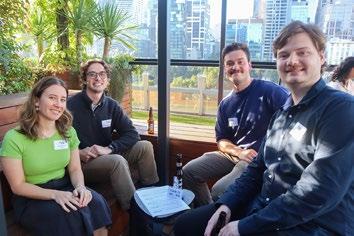

PO Box 1291
Camberwell 3124, 9813 2801
www.vpela.org au







VPELA – A MULTI-DISCIPLINARY PROFESSIONAL
Established in 1989, the Association holds regular seminars, social events and a conference annually. It also reviews legislation, provides high level advice to Government and makes submissions to all aspects of land use planning. If you have any questions or are interested in joining the Association, contact Anna Aughterson, Executive Officer – admin@vpela.org.au